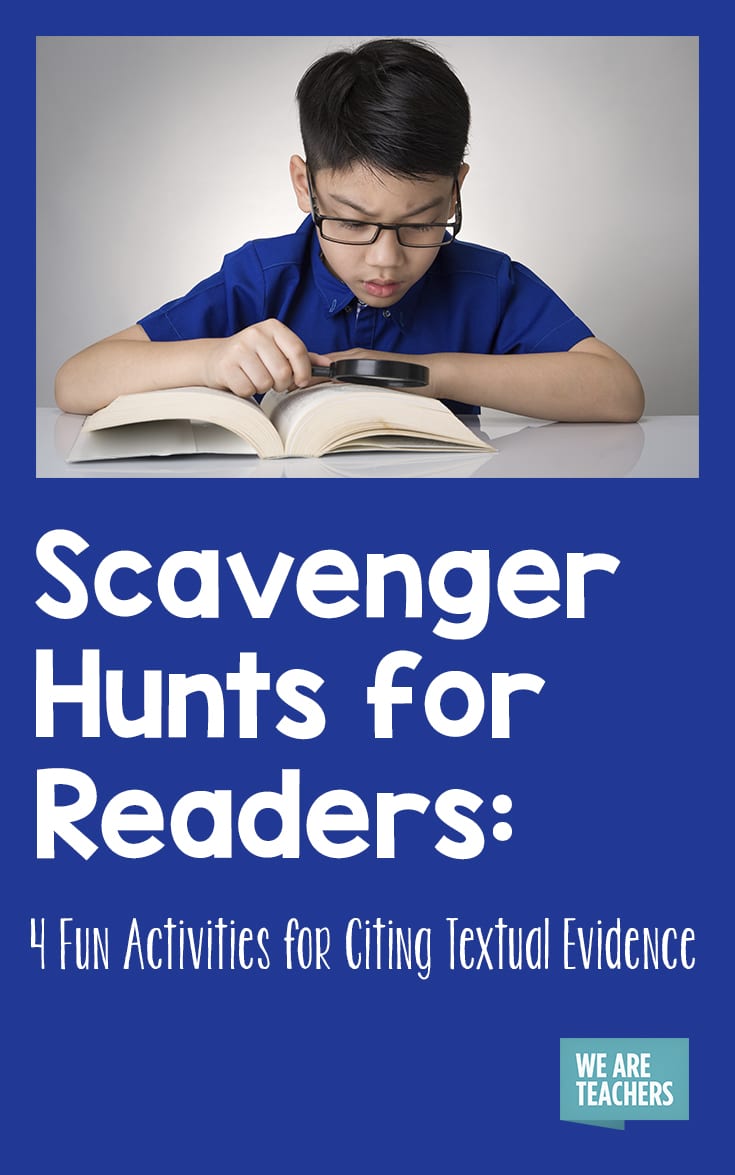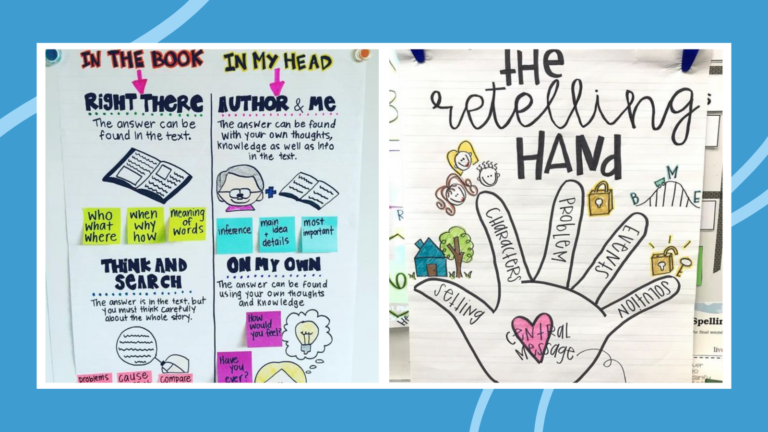It can be hard and intimidating for readers to back up their ideas and think about a book with specific quotes and passages from the text. Ask students to “cite evidence from the text” and you often see a look of desperation on their faces. I’ve found that as students gain confidence, having them jot their thinking on organizers helps a lot. Here, I share four of my favorite activities for citing textual evidence—two for fiction and two for nonfiction. Of course, always model these organizers or co-construct before asking students to do them independently! And always use your favorite and fabulous books!
You can also check out the FB Live on teaching evidence-based writing.
Activity to Try: Back Up Your Thinking
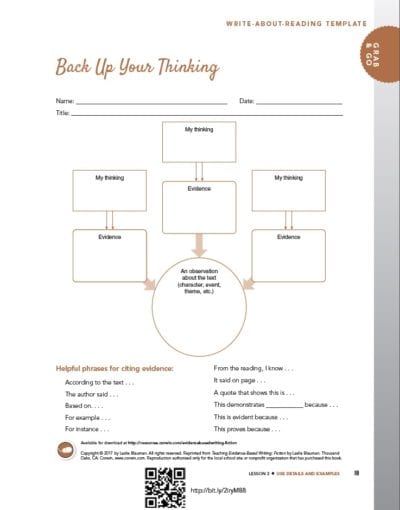
Download the “Back Up Your Thinking” Activity PDF
This “Back Up Your Thinking” organizer is a great start for getting students to share their thinking rather than merely answering questions. Choose a skill you want readers to practice—for example, describe the character, event, setting, or theme. Using a short piece of text, have students read through it once, and then fill in the “observation from the text” section. Next comes the hunt for clues. Students read the text a second time, highlighting and annotating if possible, or simply jotting their ideas in the thinking bubbles. The final step is to “lift a line” from the text (or a phrase) that adds support to their thinking. Often, we have charts displayed with the phrases that help introduce evidence, but they are also right on the page for the students who need immediate access to them.
Activity to Try: Pick a Question
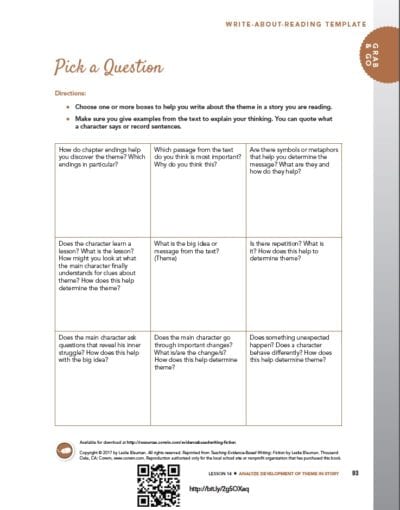
Download the Pick-a-Question Activity PDF
Finding theme can be tough because it requires so much inferential thinking across a text. That’s why I love to introduce theme by using short movie clips (Pixar shorts are terrific). Then, have students write the theme in a full sentence on a sticky note, along with one sentence explaining why they chose that theme. To support students, use the Pick a Question organizer to make the exercise more like a game, sending them to hunt for clues to a question you pose. For example, “Does the main character ask questions that reveal his inner struggle?” or “Is there repetition? What is it?” These questions, and the others on the activity page, help kids gain the smarts needed to infer and determine theme. After working through the questions, students can then choose the question that they feel helps them best identify the theme and fill in the appropriate box.
Activity to Try: Ask and Answer Questions
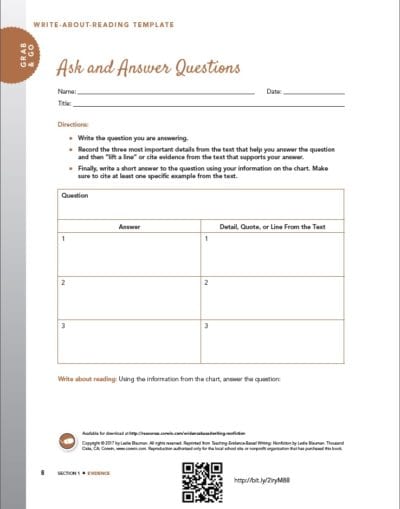
Download the Ask-and-Answer-Questions Activity PDF
When introducing supporting thinking with evidence from nonfiction, it’s often beneficial to start with a focus on questions. Why? Raising questions is the central way we engage with nonfiction authors’ ideas. It helps readers feel in the driver’s seat of navigating a text, rather than feeling out of control with facts coming at them a mile a minute. It’s also important for students to value their own questions and curiosities. With this organizer, students develop their own question about the text and then find three answers to it, along with the detail, quote, or line that supports the answer.
Another way to introduce this as a “Search” is to use an article or piece that begins with a question. I love to bring in any of the articles from Kathy Wollard’s How Come books, as each article begins with a question (e.g., “Where do tornadoes come from?”). Students can simply use this question on their organizer, or they can come up with one of their own before they read. Read through the text once to get a general understanding. On the second reading, highlight and annotate specific sections of the text that answer the question. Then choose three of these examples to add to the organizer. This can also be a scaffold for writing short, focused summaries on nonfiction text.
Activity to Try: Visuals + Text = Better Understanding
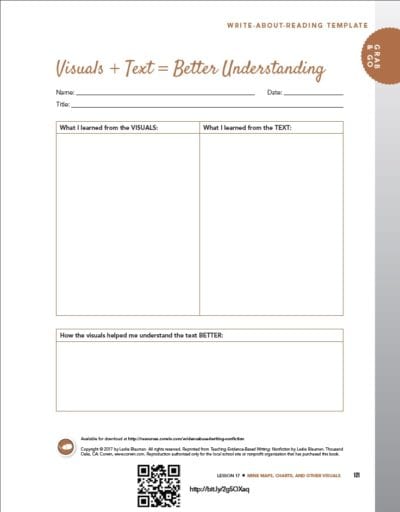
Download the Visuals + Text = Better Understanding Activity PDF
Sending students back to the text to look for clues is engaging when it’s nonfiction that includes maps, charts, and other visuals. Teaching students to focus on what they learn from the text and also from visuals deepens comprehension. This organizer makes this work explicit. Choose texts that are rich with both text and visuals and invite students in on the hunt—jotting their thinking in each section, then summarizing how the visuals helped them to better understand the entirety of the piece.
Organizers and templates are great to support and scaffold students, but ultimately, we want students thinking metacognitively and doing the work independently. Use these citing textual evidence activities, but then move away from them and let the kids take control and apply what you have taught!
And remember, organizers are only as good as the text they support. Bring in great, rich texts for your students so that they can be engaged with sentences and passages loaded with style and substance. Before Thanksgiving break, your students are going to realize that their thinking is important and that they know how to back up their thinking with examples from the text—and that is the greatest prize there is.
Don’t forget to check out the FB Live on teaching evidence-based writing.
